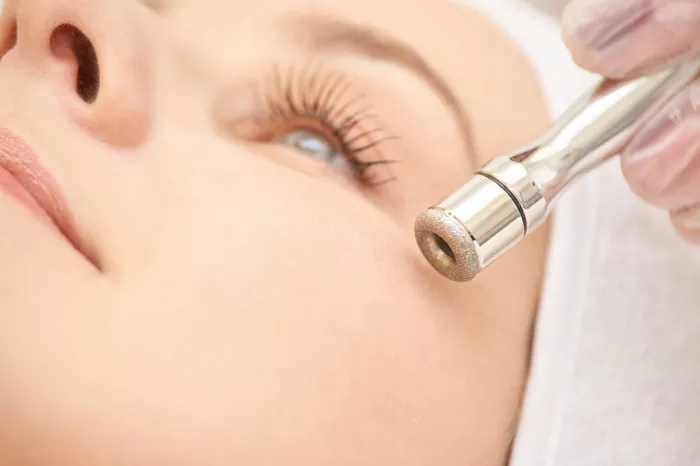Microdermabrasion and HydraFacial are two popular skincare treatments that can help to improve the appearance of the skin. Both treatments are designed to exfoliate the skin and remove impurities, but they work in slightly different ways. In this article, we will compare microdermabrasion and HydraFacial to determine which treatment is better for different skin types and concerns.
Microdermabrasion Better Than HydraFacial: An Overview
Microdermabrasion is a non-invasive skincare treatment that uses tiny crystals or a diamond-tipped wand to exfoliate the skin and remove dead skin cells. This process can help to reduce the appearance of fine lines and wrinkles, acne scars, and sun damage, and can also improve skin texture and tone. Microdermabrasion is typically performed in a spa or dermatologist’s office and can take anywhere from 30 minutes to an hour.
HydraFacial, on the other hand, is a newer skincare treatment that uses a special device to cleanse, exfoliate, and hydrate the skin. The device uses a combination of suction and serums to remove impurities and infuse the skin with nutrients and hydration. HydraFacial is also typically performed in a spa or dermatologist’s office and can take anywhere from 30 minutes to an hour.
Benefits and Risks of Microdermabrasion
Microdermabrasion offers a number of benefits for the skin, including:
Improved skin texture and tone: Microdermabrasion can help to improve the texture and tone of the skin, leaving it looking smoother and more youthful.
Reduced appearance of fine lines and wrinkles: Microdermabrasion can help to reduce the appearance of fine lines and wrinkles, giving the skin a more youthful appearance.
Reduced appearance of acne scars: Microdermabrasion can help to reduce the appearance of acne scars, making the skin look smoother and more even.
Minimal downtime: Microdermabrasion is a non-invasive treatment that requires little to no downtime, making it a convenient option for people with busy schedules.
However, there are also some risks associated with microdermabrasion, including:
Redness and irritation: Microdermabrasion can cause redness and irritation in the treated area, particularly if the skin is sensitive.
Sun sensitivity: Microdermabrasion can make the skin more sensitive to the sun, so it’s important to wear sunscreen and avoid prolonged sun exposure after the treatment.
Infection: Like any skincare treatment, microdermabrasion carries a risk of infection if proper hygiene practices are not followed.
Benefits and Risks of HydraFacial
HydraFacial also offers a number of benefits for the skin, including:
Improved hydration: HydraFacial can help to hydrate the skin, leaving it looking plump and healthy.
Improved skin texture and tone: HydraFacial can help to improve the texture and tone of the skin, leaving it looking smoother and more youthful.
Reduced appearance of fine lines and wrinkles: HydraFacial can help to reduce the appearance of fine lines and wrinkles, giving the skin a more youthful appearance.
Minimal downtime: Like microdermabrasion, HydraFacial is a non-invasive treatment that requires little to no downtime.
However, there are also some risks associated with HydraFacial, including:
Redness and irritation: HydraFacial can cause redness and irritation in the treated area, particularly if the skin is sensitive.
Sun sensitivity: HydraFacial can make the skin more sensitive to the sun, so it’s important to wear sunscreen and avoid prolonged sun exposure after the treatment.
Allergic reactions: Some people may be allergic to the serums used in HydraFacial, which can cause allergic reactions and other complications.
Choosing the Right Treatment for Your Needs
Choosing the right treatment for your needs depends on a number of factors, including your skin type, your concerns, and your budget. Here are some tips for choosing the right treatment for your needs:
Talk to a skincare professional: A skincare professional can help you determine which treatment is best for your skin type and concerns.
Consider your budget: Microdermabrasion and HydraFacial can vary in cost, so it’s important to consider your budget when choosing a treatment.
Be realistic about your expectations: Both microdermabrasion and HydraFacial can improve the appearance of the skin, but they may not be able to correct all skin concerns. Be realistic about your expectations for the treatment and discuss your goals with a skincare professional.
Follow aftercare instructions: Both microdermabrasion and HydraFacial require aftercare to ensure optimal results. Be sure to follow the aftercare instructions provided by your skincare professional to minimize the risks of complications.
Conclusion
Microdermabrasion and HydraFacial are both effective skincare treatments that can improve the appearance of the skin. While both treatments offer similar benefits, they work in slightly different ways and may be better suited for different skin types and concerns. By working with a skincare professional and understanding the benefits and risks of each treatment, you can make an informed decision about which treatment is right for your needs.

